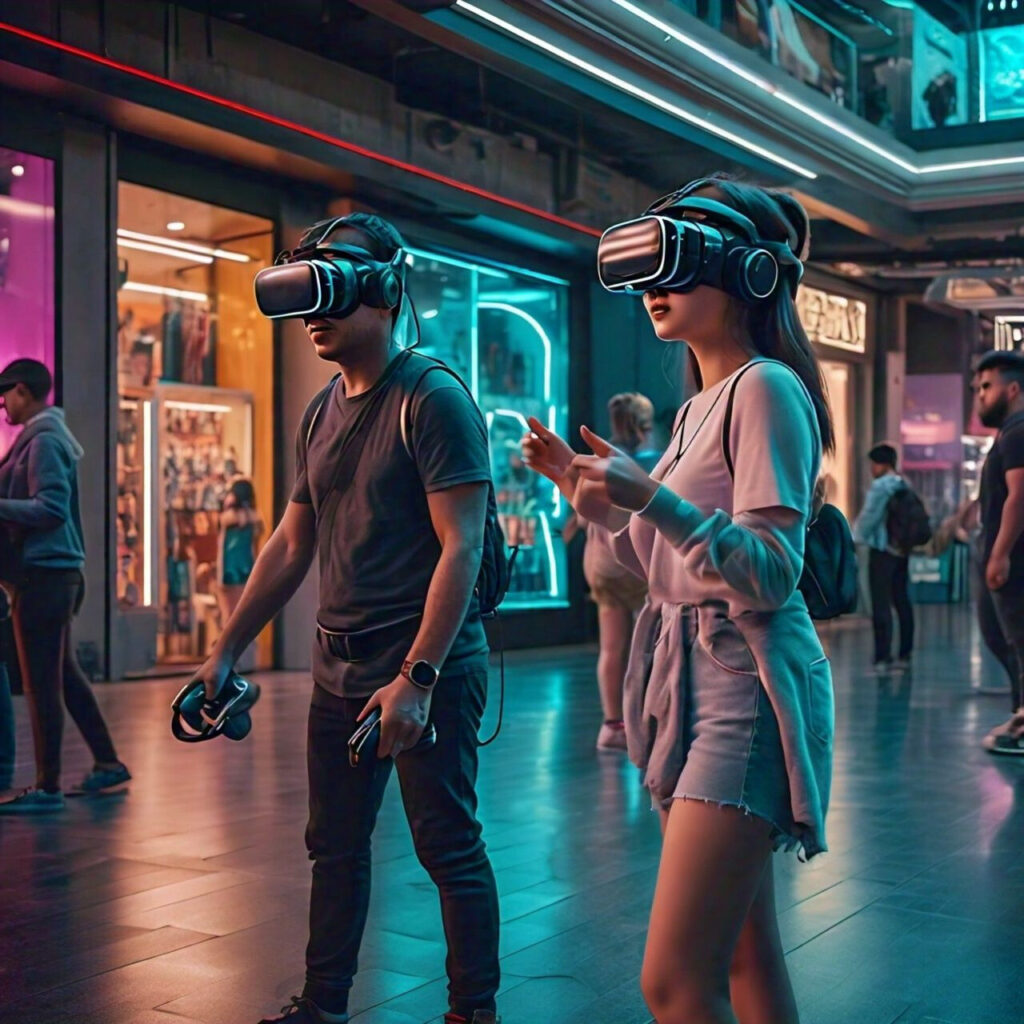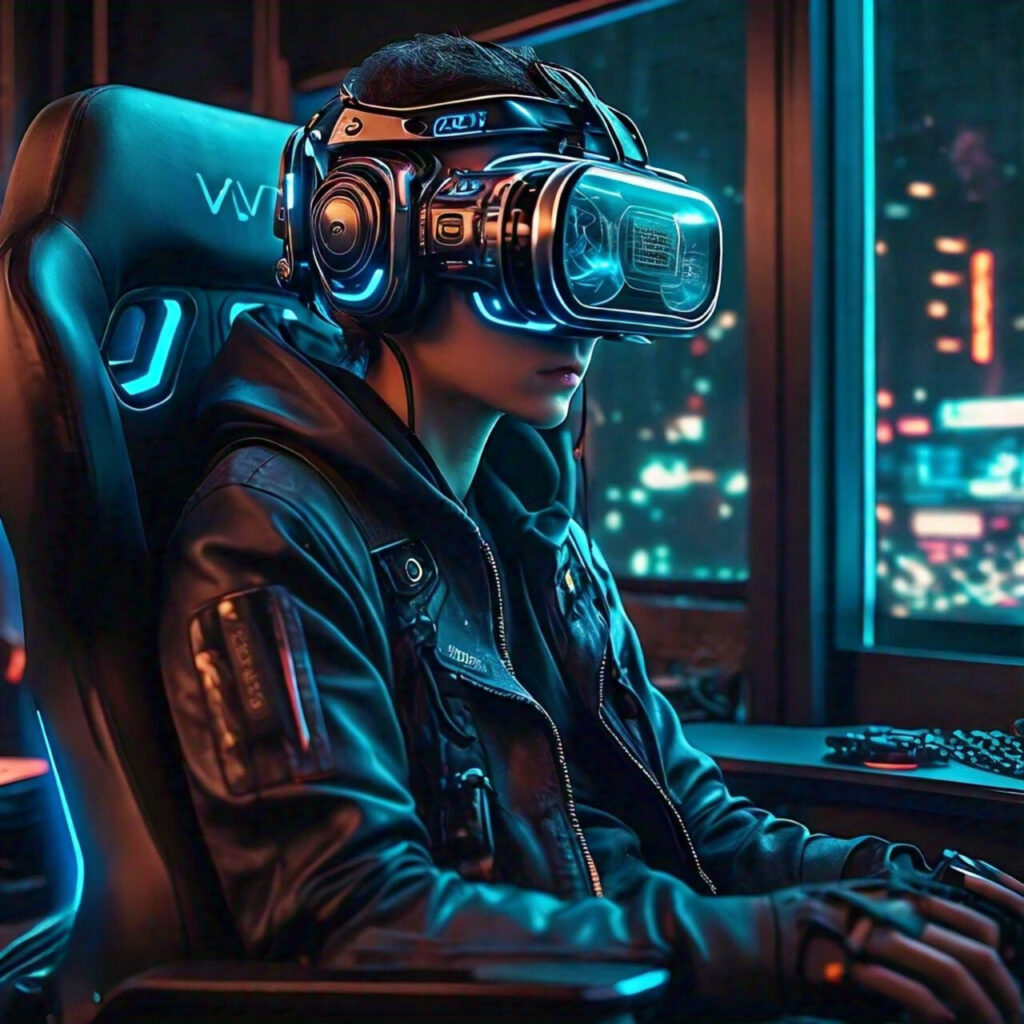VR Mainstream Adoption
Is Virtual Reality All Set for Takeoff? Examining Obstacles and Opportunities (Trend Analysis)
For years, people have been fascinated with virtual reality (VR), which promises immersive experiences that meld the real and virtual worlds together. From early arcade games to futuristic films, virtual reality (VR) has always had the potential to completely transform employment, education, and leisure. But is VR finally ready for the general public, after years of hype? Let’s evaluate the condition of virtual reality technology now, the difficulties it still faces, and its intriguing future prospects.

Table of Contents
Virtual Reality’s Allure: A World of Opportunities
VR Mainstream Adoption
VR provides a special and effective means of interacting with the virtual environment. Virtual reality (VR) generates a sense of presence in a virtual environment through the use of a headset that fully covers your vision and frequently includes spatial tracking. This creates a plethora of opportunities:
- Immersive Entertainment: Picture yourself playing computer games that transport you to magical settings, directing your own film, or sitting front row at a performance. VR has the potential to completely change the way we consume entertainment.
- Educational Transformation: Virtual reality field tours to historical sites, three-dimensional dissections of human bodies, and interactive simulations have the potential to revolutionise education.
- Workplace Innovation: Virtual reality (VR) technologies have the potential to transform design and prototyping processes, enable distant collaboration in virtual workspaces, and offer training for hazardous or complex tasks.
Obstacles on the Path to Widespread Adoption
VR Mainstream Adoption
Virtual reality (VR) still has a long way to go before it is widely adopted, despite its obvious potential:
- Cost: Since high-quality VR headsets can be pricey, many casual users cannot afford them. This restricts the market as a whole by raising the entry hurdle.
- Content Availability: Although virtual reality experiences are becoming more common, there is still a dearth of excellent content, especially outside of the game industry. The dearth of interesting material deters prospective buyers from purchasing VR gear.
- User Comfort and Motion Sickness: Due to motion sickness and field of view restrictions, early VR headsets can make users feel queasy and lightheaded. Taking care of these comfort concerns is essential to ensuring a positive user experience.
- Limited Processing Power: To produce high-fidelity graphics and keep seamless tracking, virtual reality experiences frequently demand a large amount of processing power. Accessibility for those with less capable computers may be limited as a result.
Prospects for Hope: Progress and Possible Remedies
VR Mainstream Adoption
The VR market is always changing, and a few developments give hope that these difficulties can be overcome:
- More Accessible Hardware: As new, reasonably priced VR headset models appear, the price of VR headsets is progressively going down. Furthermore, stand-alone VR headsets that don’t need a strong PC are getting more and more well-liked.
- Emphasis on Content development Tools: Increasing the accessibility of VR content development for developers is essential to growing the content library. The entry hurdle for makers is getting lower thanks to user-friendly tools and engines. VR Mainstream Adoption
- Comfort Enhancements: To reduce user discomfort, VR headset makers are continuously enhancing the ergonomics, weight distribution, and resolution of their products.
- Cloud Processing Solutions: By doing away with the requirement for robust local hardware, cloud-based VR services may enable VR experiences to be accessed by a larger audience on any device that can stream media.
VR’s Future: A Look Into a More Immersive Universe
VR Mainstream Adoption
If VR can get over these obstacles, interesting things could happen in the future:
- VR as a Social Platform: Picture yourself having virtual get-togethers with loved ones all over the world or going to concerts and events in virtual reality for an incredibly immersive experience. VR Mainstream Adoption
- Revolutionising Education and Training: Virtual reality (VR) has the potential to become a regular tool in schools and offices, improving training outcomes and making learning more enjoyable.
- Telepresence and distant Collaboration: Virtual reality has the potential to blur the boundaries between physical and virtual presence by enabling realistic distant collaboration in virtual workspaces.

In conclusion, might VR be the next big thing?
VR Mainstream Adoption
Even while VR isn’t quite ready for widespread use, it’s getting there. VR has the potential to become an increasingly commonplace aspect of our lives as technology develops, costs come down, and content libraries grow. Virtual reality (VR) gives a look into a future where the lines separating the actual and digital worlds become increasingly hazy, whether it’s used for business, education, or leisure. Virtual reality has a bright future ahead of it with a plethora of possibilities.


